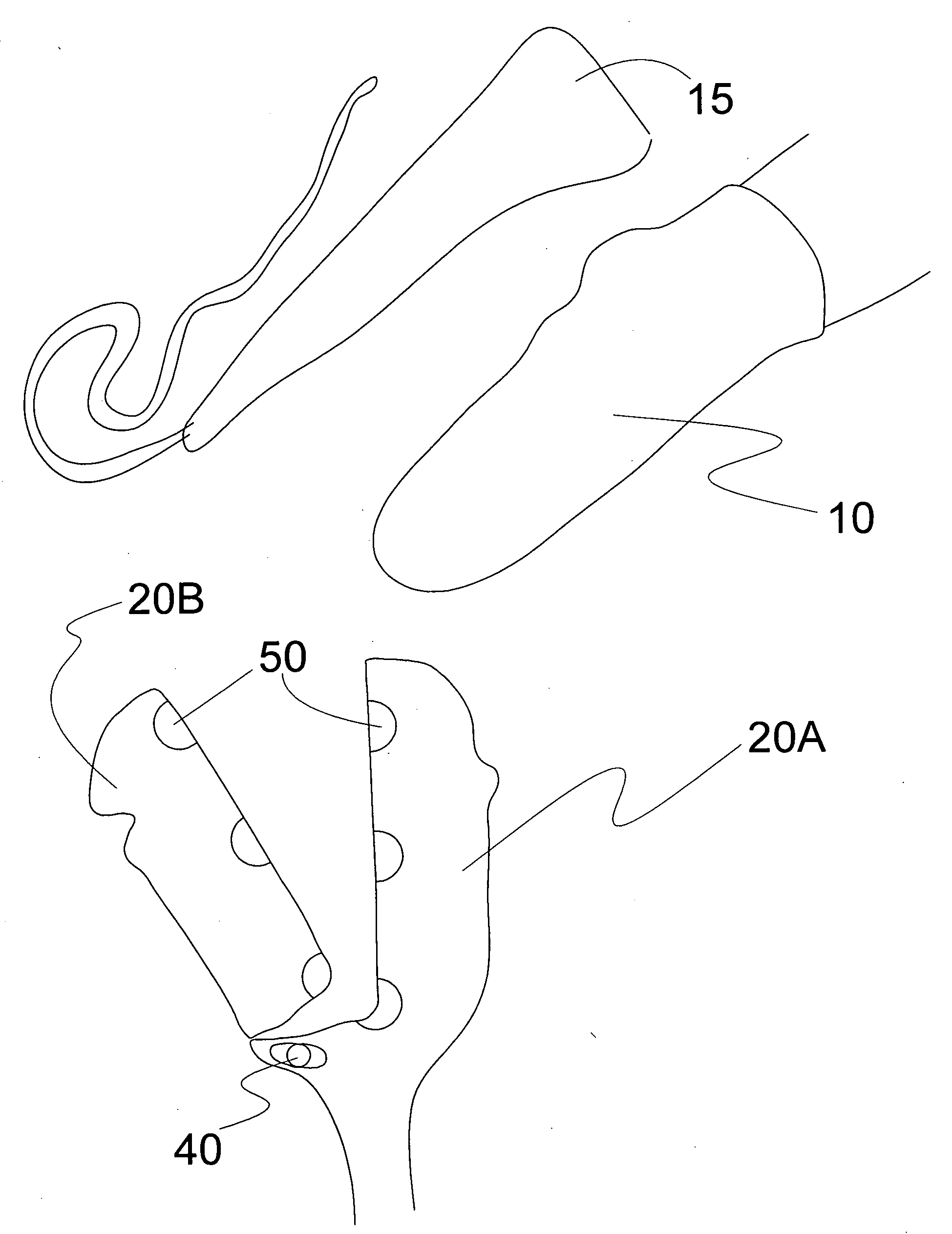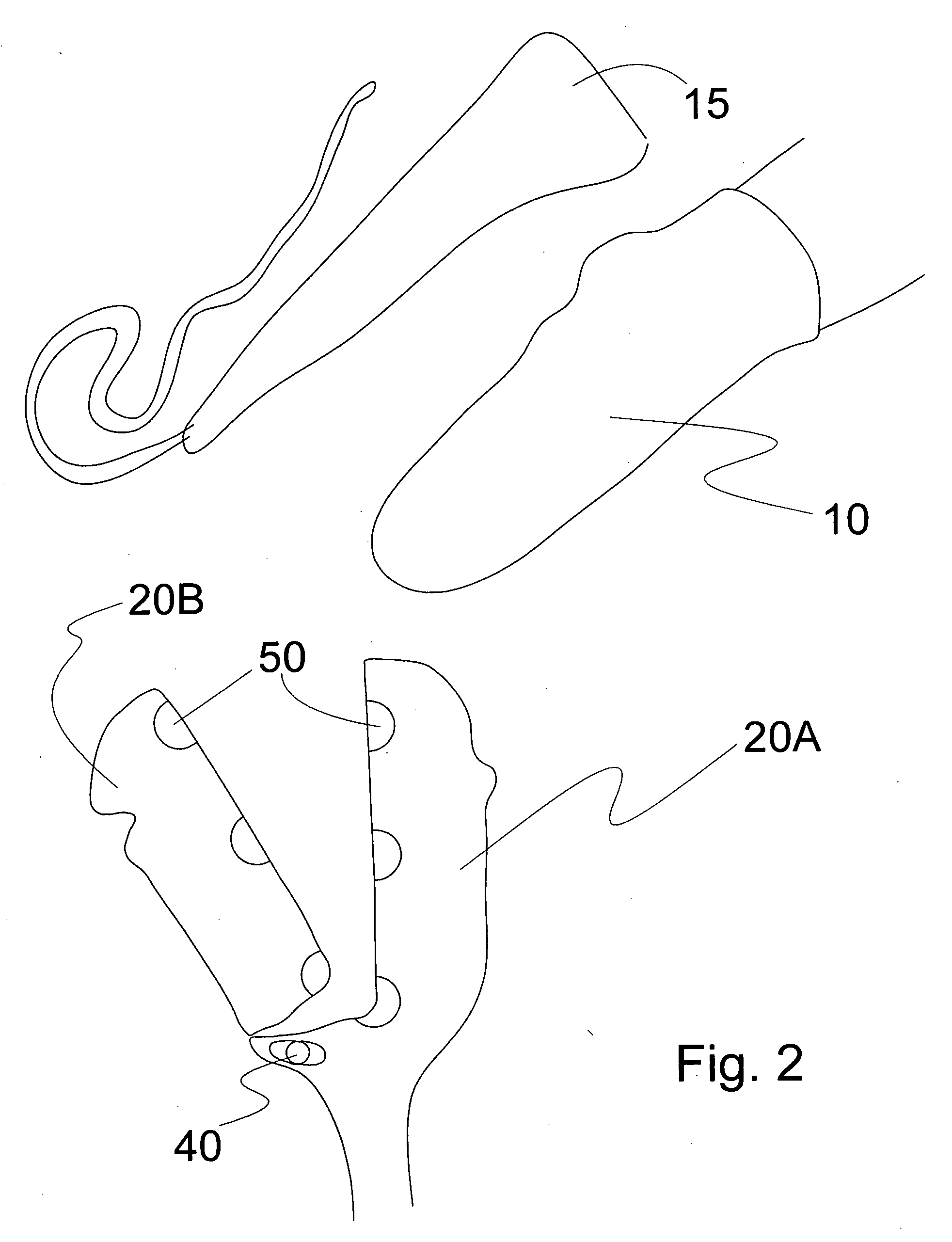Elastomeric stump sock for suspending by friction an artificial limb
a technology of elastomeric stump socks and artificial limbs, applied in the field of stump socks, can solve the problems of artificial limb falling off, giant hickees, simple but crude methods, etc., and achieve the effects of reducing slipperiness, preventing pistoning and rotation, and increasing friction
- Summary
- Abstract
- Description
- Claims
- Application Information
AI Technical Summary
Benefits of technology
Problems solved by technology
Method used
Image
Examples
example
[0050]Mr. Jones is an upper-extremity amputee. He lost his right arm a couple of inches above the elbow in an accident. Every morning, Mr. Jones gets up and dons his artificial limb. He rolls on his elastomeric stump sock (10). Then, he closes the door (20B) on the socket (20A,20B) and locks the locks (50). The door (20B) may or may not be held on to the socket (20A) with a hinge or strap.
[0051]After closing and locking shut his socket (20A,20B), Mr. Jones opens the vacuum valve (40) at the bottom of his socket (20A,20B). He dons a donning sleeve (15), such as the commercially available E-Z Don, over his stump sock (10) and inserts the distal or far end on his donning sleeve (15), usually comprising a rope or strap, into the socket (20A,20B) and out of the valve (40). He then pulls on the rope with his hands from outside of his socket (20A,20B). At the same time, he pushes his stump down into the socket (20A,20B). As he does so, he gradually yanks out the donning sleeve (15) until t...
PUM
 Login to View More
Login to View More Abstract
Description
Claims
Application Information
 Login to View More
Login to View More - R&D
- Intellectual Property
- Life Sciences
- Materials
- Tech Scout
- Unparalleled Data Quality
- Higher Quality Content
- 60% Fewer Hallucinations
Browse by: Latest US Patents, China's latest patents, Technical Efficacy Thesaurus, Application Domain, Technology Topic, Popular Technical Reports.
© 2025 PatSnap. All rights reserved.Legal|Privacy policy|Modern Slavery Act Transparency Statement|Sitemap|About US| Contact US: help@patsnap.com



